Faking Mount Everest?
An interesting story has come about towards the end of this years season on Mount Everest concerning the claim from an Indian climber that his summit shots were duplicated and used to claim a summit by another Indian couple. The Mail Online features Gavin's opinions about the veracity of the photographs and also some intriguing questions.
Firstly here are the two summit pictures side by side:
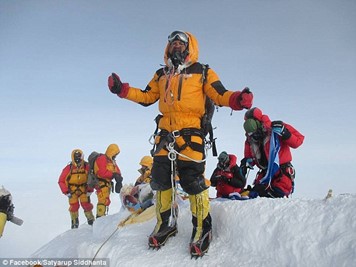
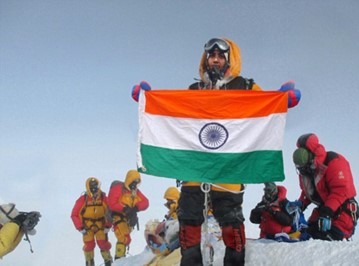
On the left is Satyarup Siddhanta standing on the top. On the right is either Dinesh and Tarakeshwari Rathod (a couple) standing on the top. The two photos are identical in almost every way. The figures in the background are the same people in almost the same positions, the weather looks the same and the angle of the shot is the same. Has the right hand one been photoshopped as Sityarup claims?
Now have a look at these two summit pictures:
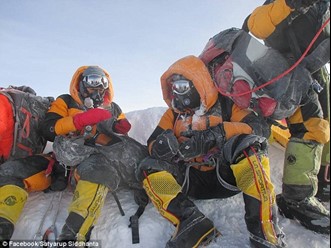
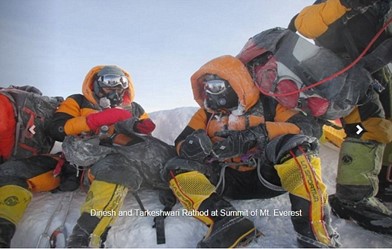
On the left is Satyarup's picture of him on the summit and on the right is the picture that appeared on the website of the company that took Dinesh and Tarakeshwari Rathod on the expedition. Except they are both the same photo!
Mail Online asked me this question - if the two right hand pictures are of the same person standing on top of Mount Everest, how come the boots are different colours, the down jacket appears differently coloured (yellow and orange) and the mitts are different? Could it be possible that anyone could change their clothes on the top of Everest?
My answer was a definitive no. Nobody carries two sets of boots on summit day. It's certainly conceivable that you might carry a second pair of mitts though, and it is possible but still unlikely that a climber would carry a second down jacket in their pack. Indeed most people wear down suits so you would have to take an entire spare downsuit with you to the top and then get undressed at nearly 9000 metres to change. No way!
Looking at the two pictures on the right, in the top the climber is wearing a red pair of Crispi boots and in the bottom one they are yellow Sportiva boots. I think this difference would be very hard to explain. The difficulty of carrying boots that size in your pack - along with oxygen bottles and so on - would make it unjustifiable.
However, what this shows is only that the photos appear to have been misused. It is of course absolutely possible that Dinesh and Tarkeshwari did summit Mount Everest and maybe never got to get a shot on the summit for a multitude of reasons. Who knows.
What is intriguing for me here is the perception of what it's like on top of Everest and what you can and can't do. It's obviously cold but in terms of wind it's only possible to actually climb at that altitude when the wind speed is around 15km/h. If the wind is too strong then the windchill effect would make it just too cold. It would also be significantly more dangerous; a strong gusty wind will affect visibility which could take you off route, and it's obviously just a lot harder to climb with spindrift blowing into you. A gusty wind can quickly become a gale, so better to wait until the jet stream has lifted slightly and there's a clear spell of windless skies.
That's why there are so many queues on Everest, for no other reason than everyone climbs when the weather is good and there's only one (main) route on that side of the mountain. The media jumps on images of long lines of climbers apparently standing stationery on the way to the top of Everest but the reality for any guide is that it's just another management issue. One route, very short window of good weather and a certain number of people climbing on that day. Actually expedition leaders do collaborate and decide on which team goes when. Teams share resources and work together for the greater good. This story is saddening for me because my experiences on this mountain have always been highlighted by great moments of selflessness, collaboration and teamwork. People are respectful in the main and the guides work very hard to do their job to the best of their abilities. Sometimes it's like a pressure cooker with all the pent up emotions and fears, and sometimes there is great tragedy and sorrow. Faking a summit doesn't really affect anybody in the broad sweep of things of course, but it might further taint the impression of the mountain for people who have never been there.
In reality that day when you go to the top of Everest is always going to be one of the biggest in your life. It's really a unique individual occasion when you are truly challenged. I have chosen over the years to climb the mountain in different ways, three times without bottled oxygen and by both sides. For me though, Everest was never my nemesis, I loved my times up there.
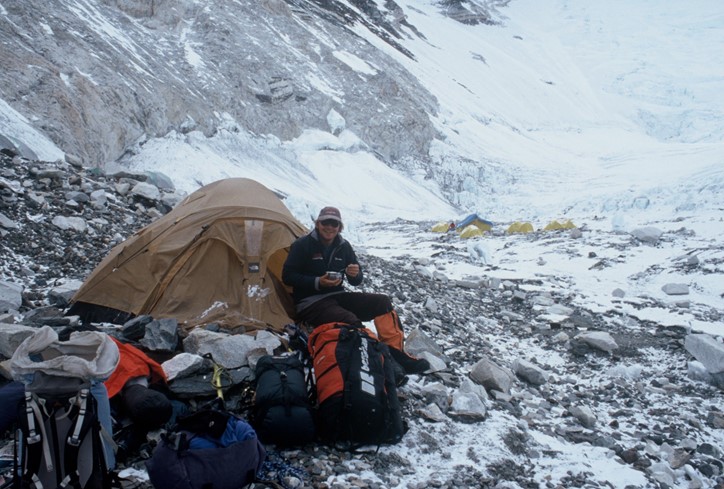
Camp 2 on Everest in 2005 when I climbed by myself with no bottled oxygen and attempted to reach the summit directly from this point without using camps 3 or 4. I made it to just below the Hillary Step but turned back because there was a queue. Without bottled oxygen I knew that waiting was not an option. My round trip 26 hours.
On summit morning in the early hours it takes about an hour to get ready in your tent, every action takes a long time and is not easy in the confines of a tent. Boots, crampons, oxygen mask/regulator/bottles, headtorch, harness, mitts, spare stuff, camera, flask of hot liquids, snacks, jumar and cows tail, hats and buff, axe, pole. By the time you step outside the tent you don't want to hang around so you put your crampons on, shoulder the pack, make sure the oxygen is flowing, check your headtorch and go. Ahead of you is a line of headtorches right in the middle of the huge black triangle which is the the last vertical 748 metres of Everest. Eight weeks into the expedition and this is it, the last bit which will take between six and ten hours ideally. You concentrate like mad, one forgotten item could spell real disaster. You move incredibly slowly and feel the cold through the five or six layers. You listen to the sound of your own breath in the mask and wonder if it's too fast. Too fast and you'll use up your oxygen and have to come down.
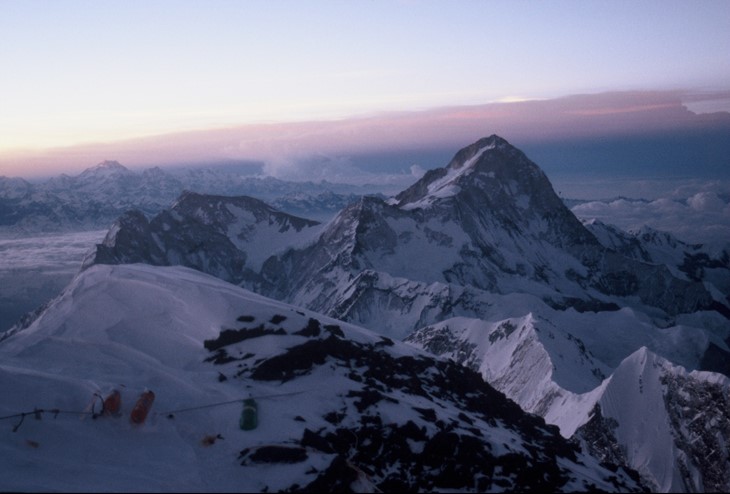
Looking towards Makalu as the first glimpse of sunrise comes up on an Everest summit day. This is in 2005 just near the Balcony and I'm climbing through. The weather was excellent.
Occasional flashes of emotion do happen - when the first rays of sunrise hit you on the south east ridge and the whole Himalaya are spread below you - but mostly you plod and you concentrate and you will yourself to go on. You watch the line of people and wish you were ten people ahead. Your mind occasionally wanders to people at home. You're in your zone and with each step the summit gets closer. Some people count steps, I relive stories in my head.
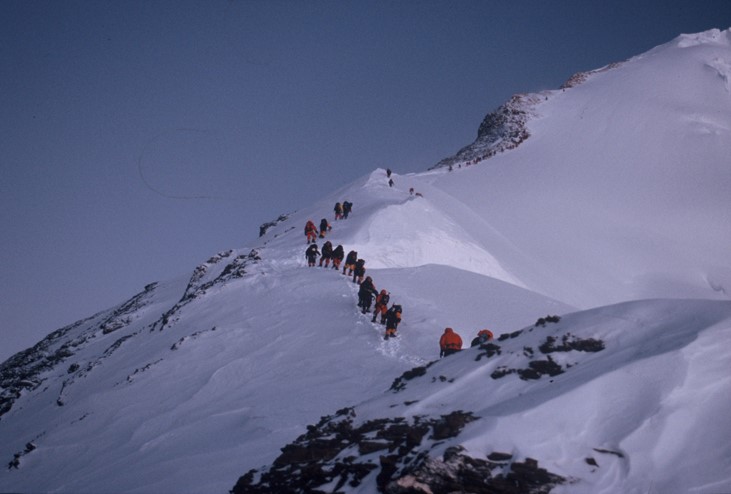
Looking up from the Balcony along the south east ridge I can see a line of people. Without oxygen the trick is to keep moving, to stop would allow me to get too cold.
The Balcony is the point where you join the south east ridge itself and where most people change their oxygen bottle. It's not a big place, and it's quite chaotic. A lot of heavy breathing and clambering about in big boots with crampons on trying to find a place to stash your empty bottle. If your team has split up then people are calling to each other, trying to regroup. It's a turning point, so some people descend from here, while the rest now form a line going ever upwards. By now the sky is lighter and you can see the features of the mountain.
The south east ridge is not particularly difficult but there are a few rock steps which become more difficult if you're wearing a cumbersome downsuit and you can't see your feet properly because of the mask. There is a fixed line but you need to place your feet and place your axe, and because of the extra effort it completely winds you. People are gasping and grunting, guides are offering advice, the line slows to a stop very often and you worry about getting cold and about the time running away. Everyone knows that there is a turnaround time and it would be extremely dangerous to get caught out coming down in the dark.
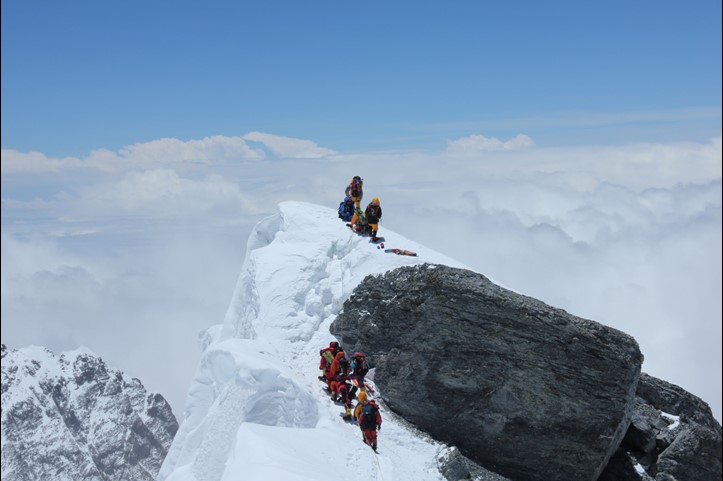
The south summit is quite precarious and exposed, but it's a moment to stop and drink and change an oxygen bottle and prepare for the last bit to the top.
Coming to the south summit is a big moment, it's a tremendous view and extraordinarily airy. But from here you can now see the last vertical 100 metres to the top and it can make the heart sink. A narrow ridge on unstable ground followed by the famous Hillary Step. Unless you're first in line, the route is dotted with people moving ever so slowly. It almost looks like another mountain.
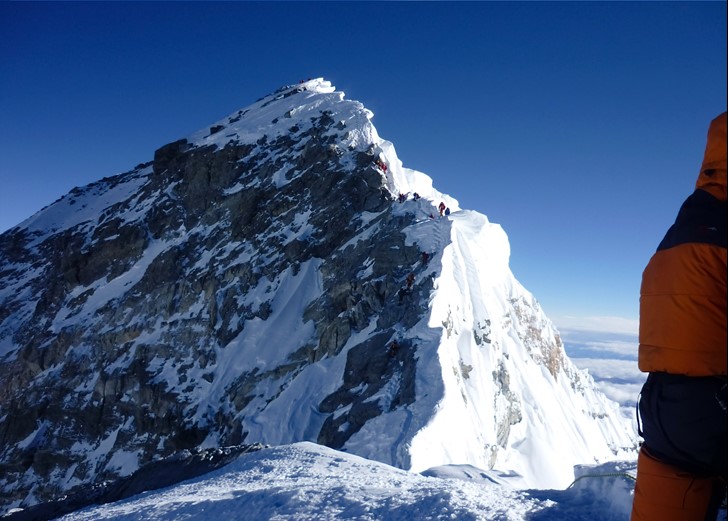
The view from the south summit towards the summit with the narrow ridge to negotiate and the Hillary Step, a 40' rock step, after which it's a reasonable snow slope to the top.
But with the summit in sight comes increased resolve and adrenaline. Here people often change oxygen bottle again, it really depends on your flow rate and how much you have used. Some people turn back from here for a variety of reasons - run out of time, a hacking cough, too little oxygen, too tired, overwhelmed by it - but for those who continue there is now high chance of reaching the top.
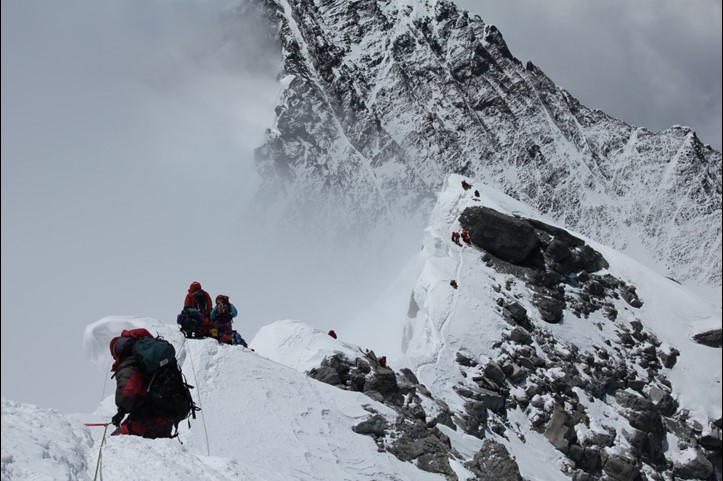
Looking back along the ridge between the Hilary Step and the south summit, you have to keep a clear focus on safety and don't go too near the cornice.
As is so often the case the route is not so bad once you're on it. There are some spectacular drops either side of you on the ridge, many thousands of feet, and you make sure not to go near any corniced edge. In some places you can put the shaft of your axe through the ice and it's only a few inches thick.
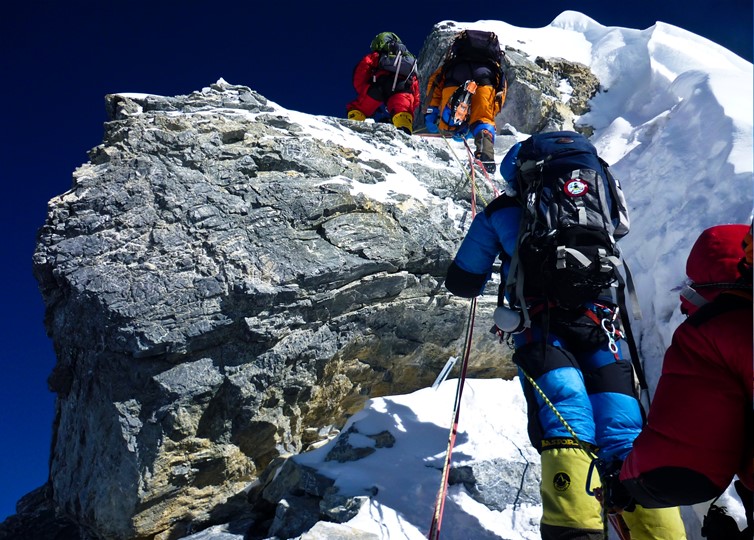
Clambering up the Hillary Step is tiring but not technically too demanding, if it was being done at lower altitude! Up here everything is made harder. Fixed lines help but they are only as good as the anchor attaching them to the mountain, and many are loose.
The Hillary Step is a rock step which can either be dry or plastered in snow and ice, depending on the day. Either way it completely takes it out of you climbing over it. One section is a almost a bridge move but your bottom is forced outwards by a bulge of rock and at that very moment you really are dangling on top of the world. You shunt and slide around, crampons points skittering on the rock, and then you're over it and there's just an easy angled snow slope to the little mound covered in prayer flags. It looks really easy.
Something about that last hundred or so metres is imprinted on my memory more than any other part of the climb. I remember thinking I'd got halfway, and I was now in the most potentially dangerous place. I thought a lot about all my climbs on Everest, all the people involved over the years, all the money raised for Moving Mountains and just the sheer amount of effort it had all taken.
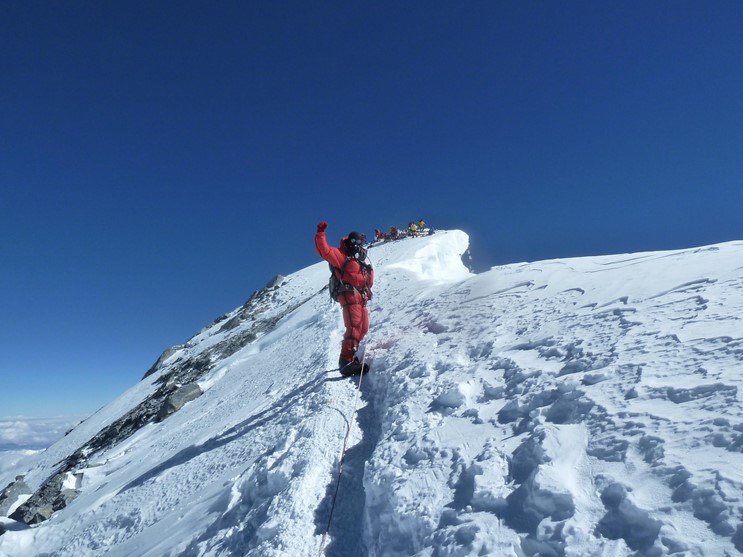
Nearly there! It's a pretty big moment to get to the top of Everest..
Some years later I can reflect on it all with perspective. My eleven years of climbing on Mount Everest were some of the best of my life, I met my wife in the middle of them! I have memories which are very special and I am always very proud that I organised all the trips myself and was always self-guided or guiding others.
It's true that you view the world somewhat differently when you've seen it from the highest point, it has enhanced many aspects of how I think about life. Like any achievement, it's up to you how you choose to use it afterwards. Part of me thinks that you do the best you can in life and speak nothing of it, another part of me realizes that climbing Everest is a platform for many other journeys I can take in life. It's up to me.

